
Roots
To truly understand the nightly embrace our hair seeks, we must first turn our gaze inward, to the very structure that makes each strand unique. Consider the quiet resilience of a single curl, a spiral wonder holding secrets of its lineage and future vitality. This intimate knowledge, the wisdom of the hair’s own being, forms the bedrock of thoughtful care. We often consider external influences on our hair’s well-being, yet the foundational understanding of its biological make-up and historical treatment offers a deeper perspective on why protective measures, especially during slumber, are so vital.
The hair we see and touch, a seemingly simple filament, possesses a complex internal architecture. Each strand emerges from a follicle, a tiny organ nestled within the scalp. The shape of this follicle largely dictates the curl pattern of the hair that grows from it. For textured hair, particularly those with tighter coils and curls, the follicle often presents an elliptical or flattened shape, contrasting with the rounder follicles that yield straight hair.
This distinctive follicular design gives rise to hair strands that are themselves elliptical in cross-section, predisposing them to twist and turn as they grow. Such inherent bends and spirals, while beautiful, create points of vulnerability along the hair shaft.
At its outermost layer, each hair strand is covered by the cuticle, a protective shield composed of overlapping scales, much like shingles on a roof. These scales, when healthy, lie flat and smooth, reflecting light and allowing for easy movement. However, the very nature of textured hair, with its numerous curves and twists, means these cuticle scales are often raised or less tightly aligned at the bends.
This structural characteristic makes textured hair inherently more susceptible to mechanical friction and moisture loss. When these delicate scales are disturbed, the hair becomes prone to tangling, frizz, and ultimately, breakage.
The unique elliptical shape of textured hair follicles gives rise to strands prone to twisting, rendering their protective cuticles more vulnerable to external stressors.
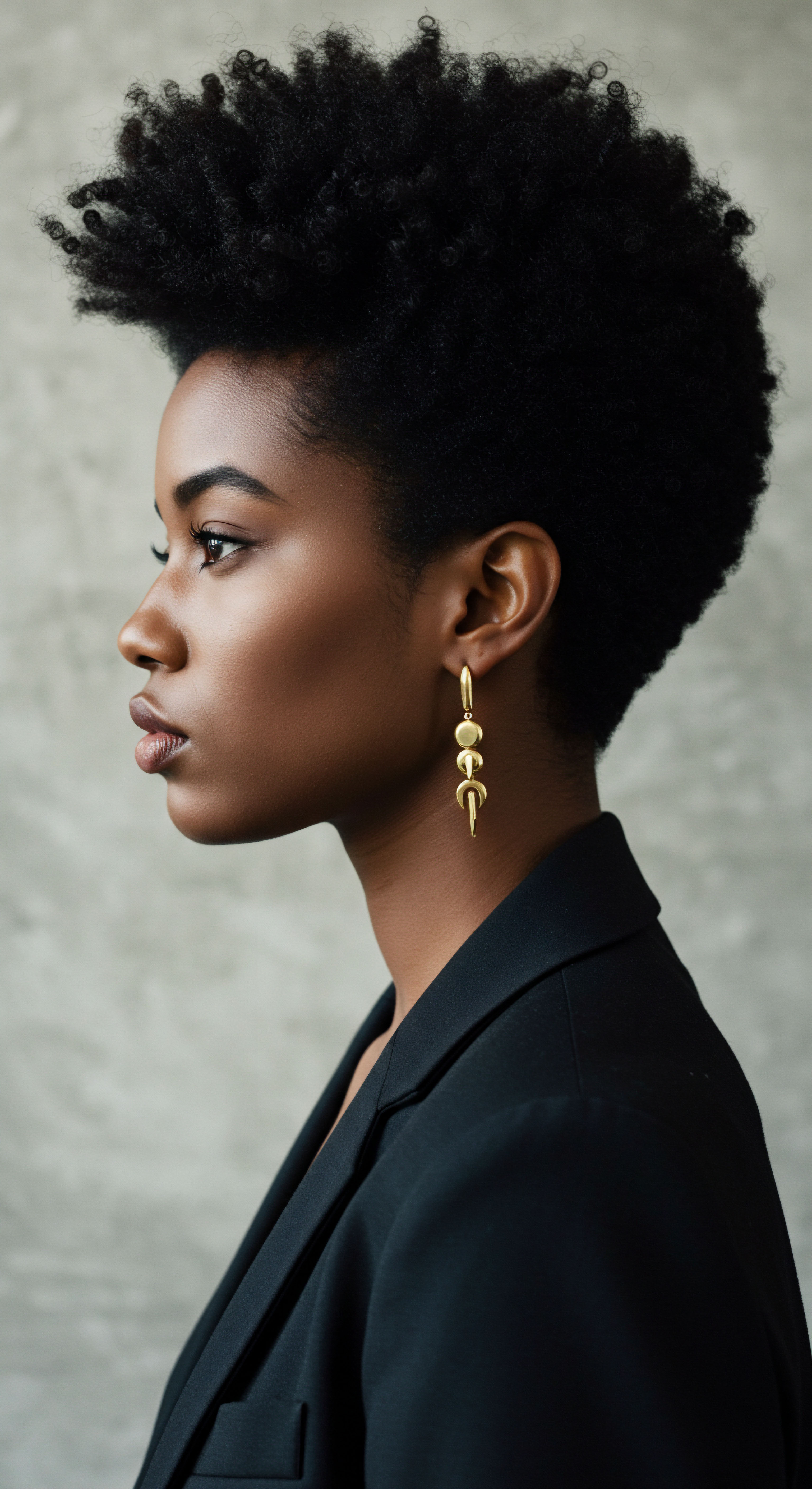
Anatomy of Textured Hair
The composition of human hair is primarily protein, specifically keratin, a fibrous protein. Within the hair fiber, three main layers exist ❉ the cuticle, cortex, and medulla. The cuticle, as mentioned, serves as the outer barrier. Beneath it lies the cortex, the hair’s central and thickest layer, responsible for its strength, elasticity, and color.
The cortex consists of keratin bundles held together by various bonds, including strong disulfide bonds and more transient hydrogen bonds. The medulla, the innermost layer, may or may not be present in all hair types or even throughout the entire length of a single strand. Its presence and continuity vary, especially in textured hair.
The elliptical cross-section of textured hair influences how these internal layers are arranged and how they react to external forces. The uneven distribution of keratin and the varying density of disulfide bonds along the curved strand can lead to differential stress points. When exposed to friction or manipulation, these stress points can become sites of damage, compromising the hair’s integrity. The greater surface area exposed by the numerous curves also means a larger area for moisture to escape, contributing to the characteristic dryness often experienced by individuals with textured hair.

How Hair Classification Relates to Care
Hair classification systems, such as the widely recognized Andre Walker typing system (ranging from Type 1 for straight hair to Type 4 for coily hair), offer a framework for understanding the diverse spectrum of textured hair. While no system is without its limitations, these classifications provide a common language for discussing specific hair characteristics and needs. Type 3 hair encompasses various curl patterns, from loose waves to tight, springy curls. Type 4 hair describes coily textures, often with very tight, small spirals or zig-zag patterns.
The relevance of these classifications in nighttime care lies in recognizing the varying degrees of fragility and moisture retention across types. Generally, the tighter the curl or coil pattern, the more vulnerable the hair tends to be to mechanical damage and dryness. This heightened susceptibility arises from the increased number of bends along the strand, which means more opportunities for cuticle lifting and breakage. Consequently, the need for protective measures, including the choice of sleeping fabric, becomes increasingly pronounced as curl patterns tighten.
- Type 3 Hair ❉ Characterized by curls that range from loose loops to tight spirals. These curls possess a defined S-shape.
- Type 4 Hair ❉ Defined by tightly packed coils, often with a Z-pattern or no discernible pattern when stretched. This hair type is typically the most delicate.
- Porosity ❉ This refers to the hair’s ability to absorb and retain moisture. Textured hair often exhibits high porosity, meaning its cuticle scales are more open, allowing moisture to enter and leave easily.

The Language of Hair Health
Within the community of textured hair care, a specialized lexicon has developed, reflecting a deep understanding of hair’s unique properties and needs. Terms such as ‘co-washing,’ ‘pre-poo,’ ‘protective styling,’ and ‘low manipulation’ are not mere trends; they represent deliberate strategies aimed at preserving hair health. For instance, ‘low manipulation’ refers to minimizing touching, combing, or styling to reduce mechanical stress, a concept directly pertinent to nighttime protection.
Understanding these terms allows for a more precise discussion of hair care practices. When we speak of ‘retaining moisture,’ we acknowledge the inherent tendency of textured hair to dry out, a factor exacerbated by absorbent fabrics. When we discuss ‘reducing friction,’ we address the physical abrasion that can compromise the cuticle and lead to breakage. This precise language aids in formulating effective nighttime routines that speak directly to the hair’s biological realities.

Hair Growth Cycles and Influencing Factors
Hair growth follows a cyclical pattern, moving through anagen (growth), catagen (transitional), and telogen (resting) phases. While these cycles are largely genetically determined, external factors and daily practices can significantly influence the health and longevity of hair strands within these cycles. Mechanical stress, chemical treatments, heat styling, and environmental exposure can all contribute to damage that shortens the anagen phase or increases shedding during the telogen phase.
Nighttime care plays a subtle yet significant role in mitigating these external stressors. By minimizing friction and preserving moisture during sleep, we create an optimal environment for the hair to endure its natural growth cycle with less interruption. This protective approach helps to safeguard the integrity of new growth and prolong the life of existing strands, contributing to overall hair health and length retention. The hair’s natural oils, vital for conditioning and protection, can also be preserved, rather than absorbed by an inappropriate sleeping surface.

Ritual
Stepping from the fundamental understanding of hair’s intrinsic nature, we arrive at the practical wisdom that guides our daily interactions with our strands. The transition from day to night, from active engagement to restorative rest, offers a profound opportunity for thoughtful care. It is during these quiet hours that our hair, often exposed to the elements and manipulation throughout the day, seeks a sanctuary. This section explores the tangible practices and chosen materials that comprise a nightly ritual designed to honor and protect textured hair, offering guidance rooted in both experience and scientific principle.
The choice of fabric for nighttime protection is a cornerstone of this ritual. Many have experienced the disheartening sight of morning hair, tangled and stripped of its moisture, a direct consequence of sleeping on absorbent, abrasive surfaces. Cotton, a ubiquitous bedding material, while comfortable for skin, presents a formidable challenge for textured hair. Its thirsty fibers readily absorb the precious moisture and natural oils that are vital for the health and flexibility of curls and coils.
Moreover, the microscopic roughness of cotton fibers creates significant friction as hair moves against the pillowcase during sleep. This constant rubbing leads to cuticle damage, tangles, frizz, and ultimately, breakage.
The fabric chosen for nighttime hair protection profoundly influences moisture retention and minimizes damaging friction, a critical aspect for textured strands.
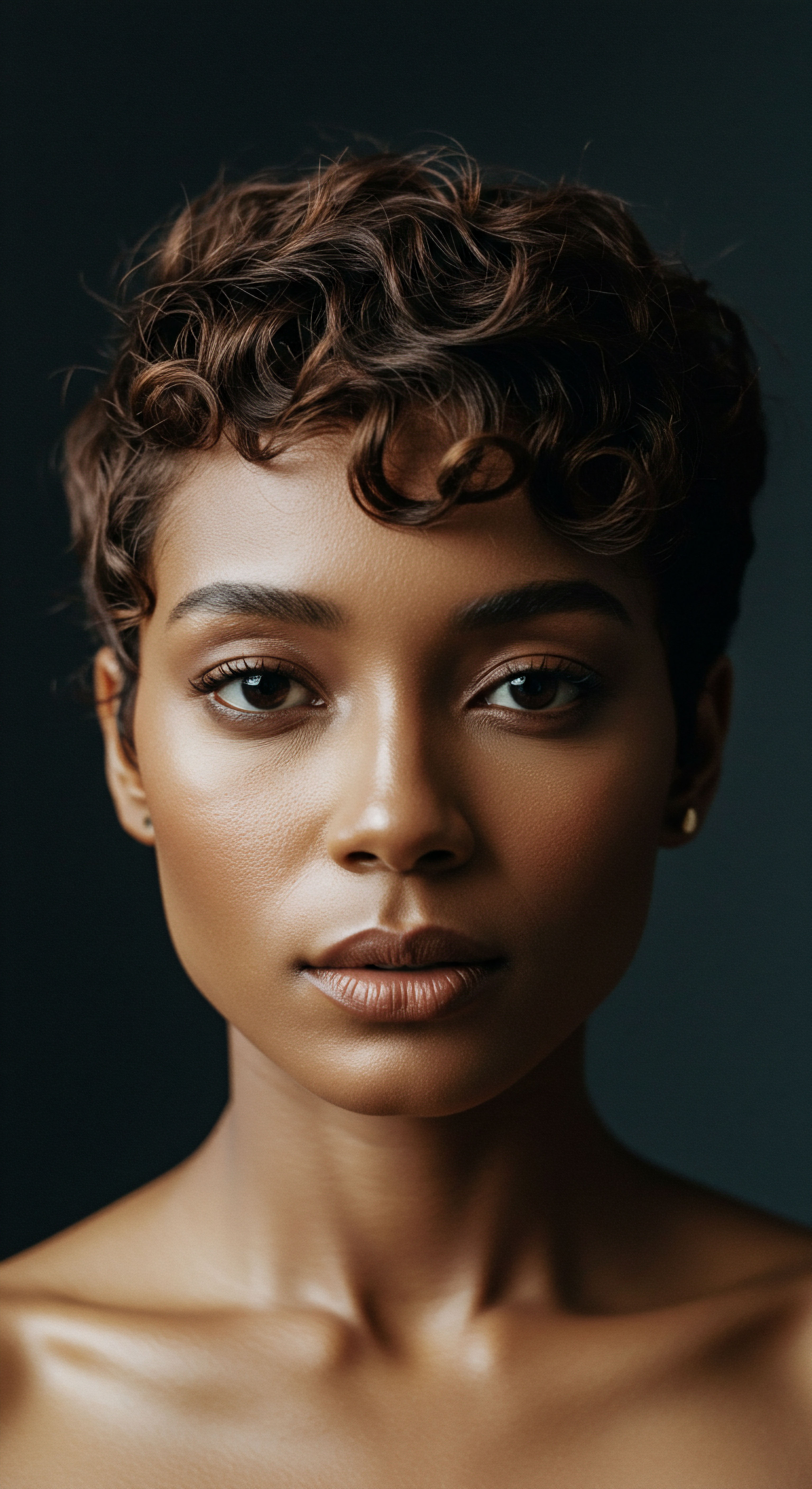
The Nighttime Sanctuary Essential Sleep Protection
Creating a sanctuary for hair during sleep involves more than just selecting a suitable fabric; it involves a mindful approach to how hair is prepared for rest. Before settling down, consider a gentle detangling, perhaps with fingers or a wide-tooth comb, working from ends to roots. Applying a light leave-in conditioner or a natural oil can supplement the hair’s moisture reserves, providing an additional barrier against dryness.
The manner in which hair is styled for sleep also plays a role. Loose braids, twists, or a pineapple bun (gathering hair loosely at the crown) can help maintain curl definition and prevent excessive tangling. These preparatory steps, combined with the right fabric, create a protective cocoon for the hair, allowing it to rest undisturbed and retain its vitality.

Why does Fabric Choice Matter for Textured Hair?
The unique structure of textured hair, with its raised cuticles and numerous points of curvature, makes it particularly susceptible to damage from friction. Cotton’s absorbent nature compounds this issue by drawing out moisture, rendering the hair more brittle and prone to breakage. A smoother, less absorbent surface allows hair to glide, preserving its structural integrity and hydration. This fundamental difference in interaction underscores the significance of fabric selection.
Consider the daily exposure textured hair endures ❉ environmental pollutants, humidity fluctuations, and styling manipulations. Sleep offers a period of recovery, yet a rough pillowcase can undo much of the day’s protective efforts. The subtle, continuous abrasion against cotton can chip away at the cuticle, exposing the inner cortex and leading to long-term damage. This sustained micro-trauma can contribute to issues like split ends, thinning, and a general lack of luster.

Bonnets and Pillowcases The Silk and Satin Solution
For generations, those with textured hair have intuitively turned to smoother fabrics for nighttime protection. This tradition finds its scientific grounding in the properties of silk and satin. These materials offer a dramatically different surface interaction compared to cotton.
Silk, a natural protein fiber, is renowned for its incredibly smooth surface and low friction coefficient. Its non-absorbent nature means it does not strip hair of its natural moisture and applied products. This allows the hair to remain hydrated and soft throughout the night. Silk is also breathable, preventing heat buildup around the scalp, which can contribute to dryness or irritation.
Satin, while often confused with silk, refers to a type of weave, not a fiber. Satin can be made from various materials, including polyester, nylon, or even silk itself. When made from synthetic fibers, satin offers a smooth, slippery surface that reduces friction comparably to silk, making it a highly effective and often more affordable alternative to cotton. While synthetic satin may not offer the same breathability or moisture-regulating properties as natural silk, its primary benefit of reduced friction is invaluable for textured hair.
| Fabric Type Cotton |
| Friction Level High |
| Moisture Absorption High |
| Breathability High |
| Common Impact on Hair Dryness, frizz, breakage, tangles |
| Fabric Type Synthetic Satin |
| Friction Level Low |
| Moisture Absorption Low to Moderate |
| Breathability Moderate |
| Common Impact on Hair Reduced frizz, less breakage, maintained styles |
| Fabric Type Natural Silk |
| Friction Level Very Low |
| Moisture Absorption Very Low |
| Breathability High |
| Common Impact on Hair Maximized moisture, minimal friction, optimal health |
| Fabric Type Choosing silk or satin significantly reduces friction and moisture loss, preserving hair integrity. |

Bonnet Wisdom
Beyond pillowcases, hair bonnets, scarves, and wraps serve as an additional layer of protection, particularly for those who move frequently in their sleep or prefer to keep their hairstyles undisturbed. The history of head coverings for hair protection, especially within Black communities, is long and rich, predating modern fabrics. These coverings were not only practical tools for preserving styles and hygiene but also held cultural significance, symbolizing identity and status.
A bonnet, ideally made of silk or satin, encases the entire head of hair, offering complete protection from friction and environmental elements. This ensures that every strand, from the delicate edges to the length, benefits from the smooth surface. Bonnets are particularly useful for preserving intricate styles like braids, twists, or roller sets, extending their life and reducing the need for daily restyling, which itself can cause damage.
- Bonnet Benefits ❉ A bonnet offers full coverage, shielding all hair from pillow friction and helping to preserve intricate styles.
- Pillowcase Benefits ❉ A silk or satin pillowcase provides a smooth surface for hair to rest on, minimizing friction and absorbing less moisture.
- Combined Protection ❉ Using both a bonnet and a silk/satin pillowcase offers a dual layer of defense, maximizing hair health benefits.
The daily act of preparing hair for sleep, choosing a protective fabric, and waking to softer, less tangled strands, becomes a gentle ritual of self-care. This simple change can profoundly alter the long-term health and appearance of textured hair, moving beyond mere maintenance to genuine cultivation.

Relay
Moving beyond the immediate practices, we consider the deeper scientific underpinnings and the profound cultural resonance of nighttime hair protection. This exploration delves into the subtle interplay of biophysical forces, historical context, and societal implications that shape our understanding of the ideal fabric for textured hair at night. The question of fabric choice, seemingly straightforward, unveils layers of complex interactions between hair, environment, and human ingenuity.
The mechanical interaction between hair and fabric during sleep is a significant contributor to damage. When textured hair, with its characteristic elliptical cross-section and propensity for twists, rubs against a surface, the friction generated can abrade the cuticle scales. These scales, designed to lie flat and shield the inner cortex, become raised, chipped, or even removed, leading to increased porosity, dryness, and ultimately, breakage. The very act of turning in one’s sleep, an unconscious necessity, becomes a nightly challenge for hair integrity.
The science of friction reveals that smoother fabrics like silk and satin significantly reduce the abrasive forces acting upon textured hair during sleep.
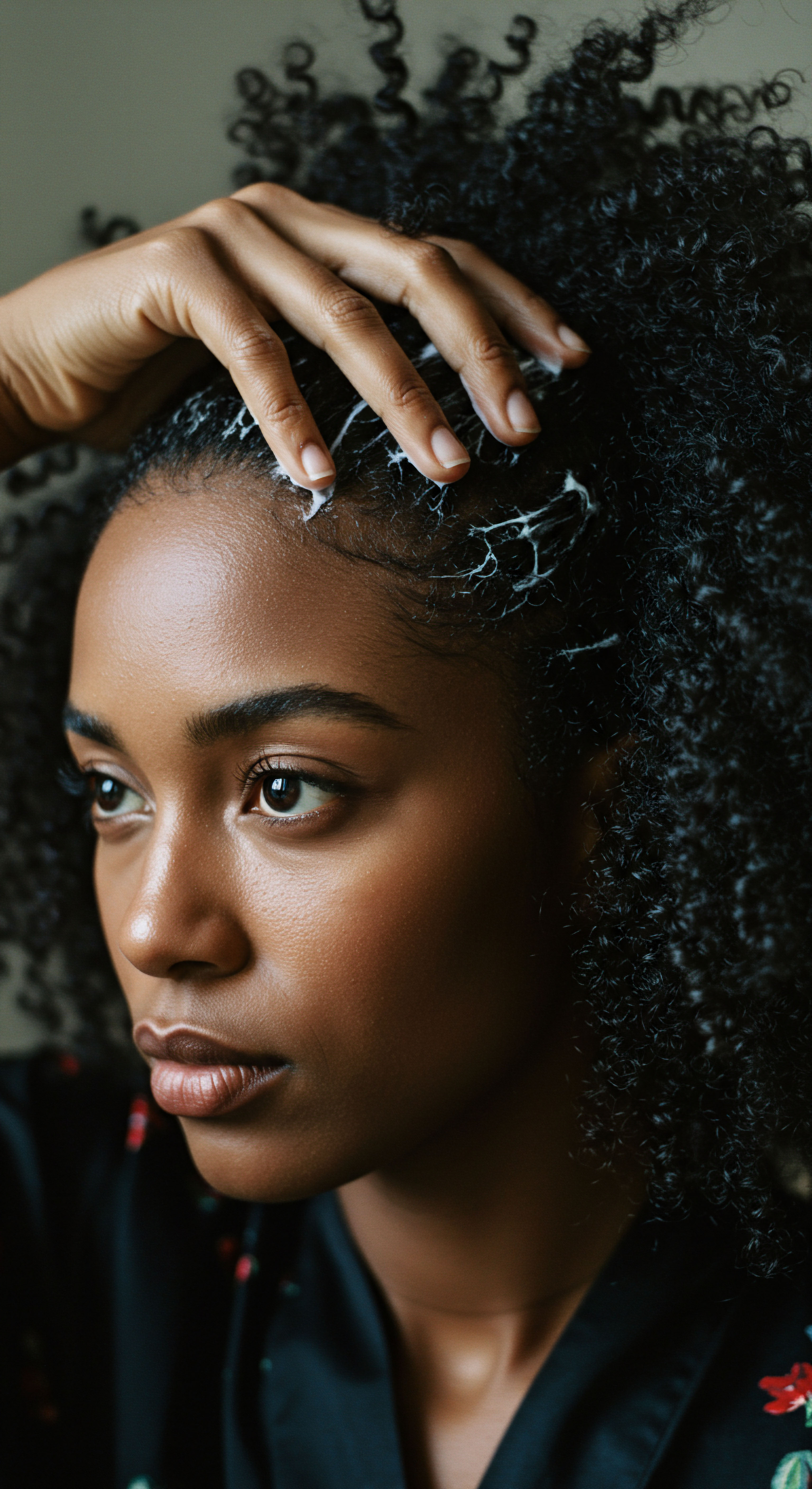
Understanding Hair Tribology and Fabric Interaction
The field of tribology, the study of friction, lubrication, and wear, offers precise insights into the interaction between hair and different materials. Research has quantitatively measured the friction coefficients of various fabrics against hair strands, providing empirical data to support long-held anecdotal observations. A study conducted by TRI Princeton, for instance, developed a novel test to measure the friction between hair and different fabrics. Their findings indicated that Luxury Silk emerged as the smoothest material.
Comparatively, velvet, despite its soft feel, registered 37.4% more friction than cotton and a striking 76.5% more friction than satin. This highlights that tactile softness does not always correlate with reduced friction at a microscopic level, where hair damage occurs.
While numerous anecdotal accounts and expert recommendations champion silk and satin pillowcases for reducing hair damage, comprehensive, direct peer-reviewed clinical studies specifically examining their long-term effects on hair loss or breakage are, at present, limited. This observation does not negate the benefits; rather, it underscores the difficulty and expense associated with large-scale clinical trials in cosmetic science. The underlying biophysical principles, such as reduced friction and lower moisture absorption, are well-understood and provide a strong theoretical basis for the observed benefits. The reduction in mechanical stress from smoother fabrics directly addresses a primary cause of cuticle damage in textured hair.
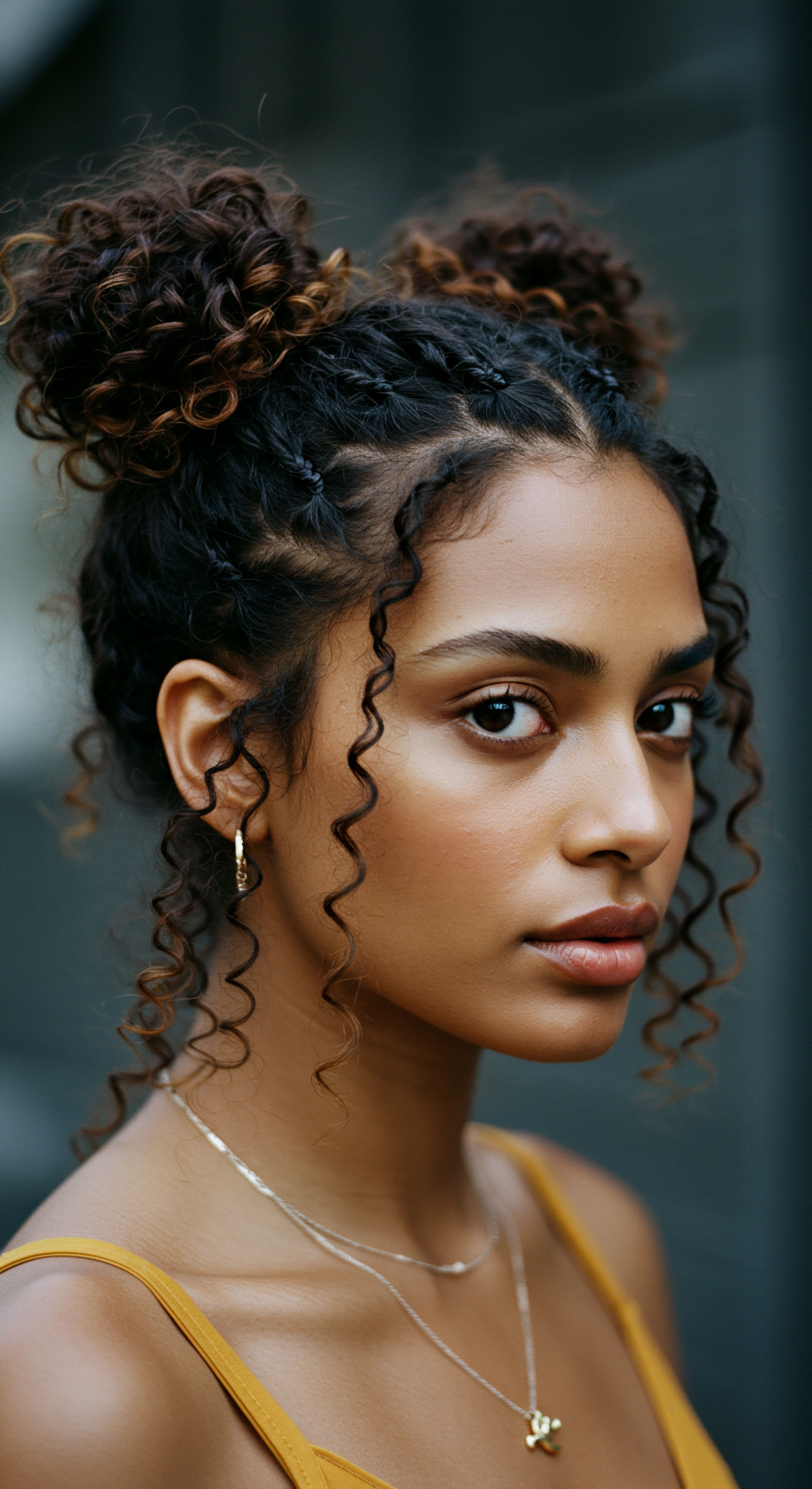
How does Hair Porosity Influence Nighttime Fabric Effectiveness?
Hair porosity, which describes the hair’s ability to absorb and retain moisture, is a critical factor in determining the effectiveness of nighttime fabrics. Textured hair often exhibits higher porosity due to its raised cuticle scales. This means moisture readily enters the hair, but also just as easily escapes.
Fabrics like cotton, with their absorbent fibers, exacerbate this issue by wicking away moisture from already vulnerable, high-porosity hair. When hair loses moisture, it becomes stiff, brittle, and more susceptible to breakage from friction.
Conversely, non-absorbent fabrics like silk and satin help to preserve the hair’s internal moisture balance. By minimizing moisture transfer from hair to pillow, these fabrics help maintain the hair’s elasticity and pliability throughout the night. This sustained hydration is crucial for preventing the micro-fractures and cuticle lifting that occur when dry hair rubs against a rough surface. The effectiveness of a protective fabric is thus deeply interconnected with the hair’s inherent porosity and its need for consistent hydration.

Cultural Significance of Hair Protection
The practice of protecting hair at night, particularly with head coverings, is not a modern invention but a deeply rooted tradition within African and African diaspora cultures. Long before the advent of silk and satin pillowcases, various forms of head wraps, scarves, and coverings were used to preserve intricate hairstyles, maintain hygiene, and shield hair from environmental elements. These practices were not merely functional; they were imbued with profound cultural, social, and spiritual meaning.
In many ancient African civilizations, hairstyles conveyed identity, status, marital status, and even spiritual beliefs. Elaborate braids, twists, and sculpted styles were often painstakingly created and required protection to maintain their form and longevity. Scarves and wraps served this purpose, becoming an integral part of daily life and nighttime rituals.
During the transatlantic slave trade, when enslaved Africans were forcibly stripped of their cultural practices, including their hairstyles, head wraps adapted as a means of protection, hygiene, and a subtle, yet powerful, act of cultural preservation and resistance. Tying head wraps at night helped prolong styling between washes when resources were scarce.
The continuity of these traditions into contemporary times, with the widespread use of satin bonnets and wraps, speaks to a collective wisdom passed down through generations. The modern satin bonnet, therefore, is not just a hair accessory; it is a cultural artifact, a symbol of resilience, self-care, and the enduring celebration of textured hair. This historical context underscores the deep-seated understanding within these communities regarding the vulnerability of textured hair and the importance of its diligent protection.
| Historical Period/Context Ancient African Civilizations |
| Hair Protection Method Intricate head wraps, sculpted styles |
| Underlying Purpose Preservation of elaborate styles, cultural identity, status, spiritual connection |
| Historical Period/Context Transatlantic Slave Trade Era |
| Hair Protection Method Adapted head wraps, basic fabric coverings |
| Underlying Purpose Hygiene, protection from harsh conditions, cultural preservation, subtle resistance |
| Historical Period/Context Post-Emancipation to Mid-20th Century |
| Hair Protection Method Head wraps, scarves, early bonnets |
| Underlying Purpose Maintaining styles, managing dual textures (relaxed/natural), practical care |
| Historical Period/Context Modern Era |
| Hair Protection Method Satin/Silk bonnets, pillowcases, wraps |
| Underlying Purpose Friction reduction, moisture retention, style preservation, self-care, cultural affirmation |
| Historical Period/Context Hair protection practices have deep cultural roots, adapting over time while consistently serving functional and symbolic roles. |

Societal Perceptions and Hair Health Disparities
The emphasis on hair protection, particularly for textured hair, also connects to broader societal perceptions and historical beauty standards. For centuries, Eurocentric beauty ideals often marginalized textured hair, leading to practices aimed at altering its natural state, sometimes through damaging chemical or heat treatments. The “natural hair movement” of recent decades represents a powerful reclamation of identity and a celebration of natural textures, prioritizing health over conformity.
Within this context, the simple act of choosing a protective fabric at night becomes an act of self-love and resistance against historical pressures. It speaks to a growing awareness of hair’s specific needs and a commitment to its well-being. This shift also brings to light potential disparities in access to specialized hair care products and knowledge.
While silk and satin are increasingly accessible, their cost can still present a barrier for some, highlighting the economic dimensions of hair health. The pursuit of healthy textured hair, supported by informed choices about nighttime fabrics, represents a continuous journey of self-discovery and cultural pride.
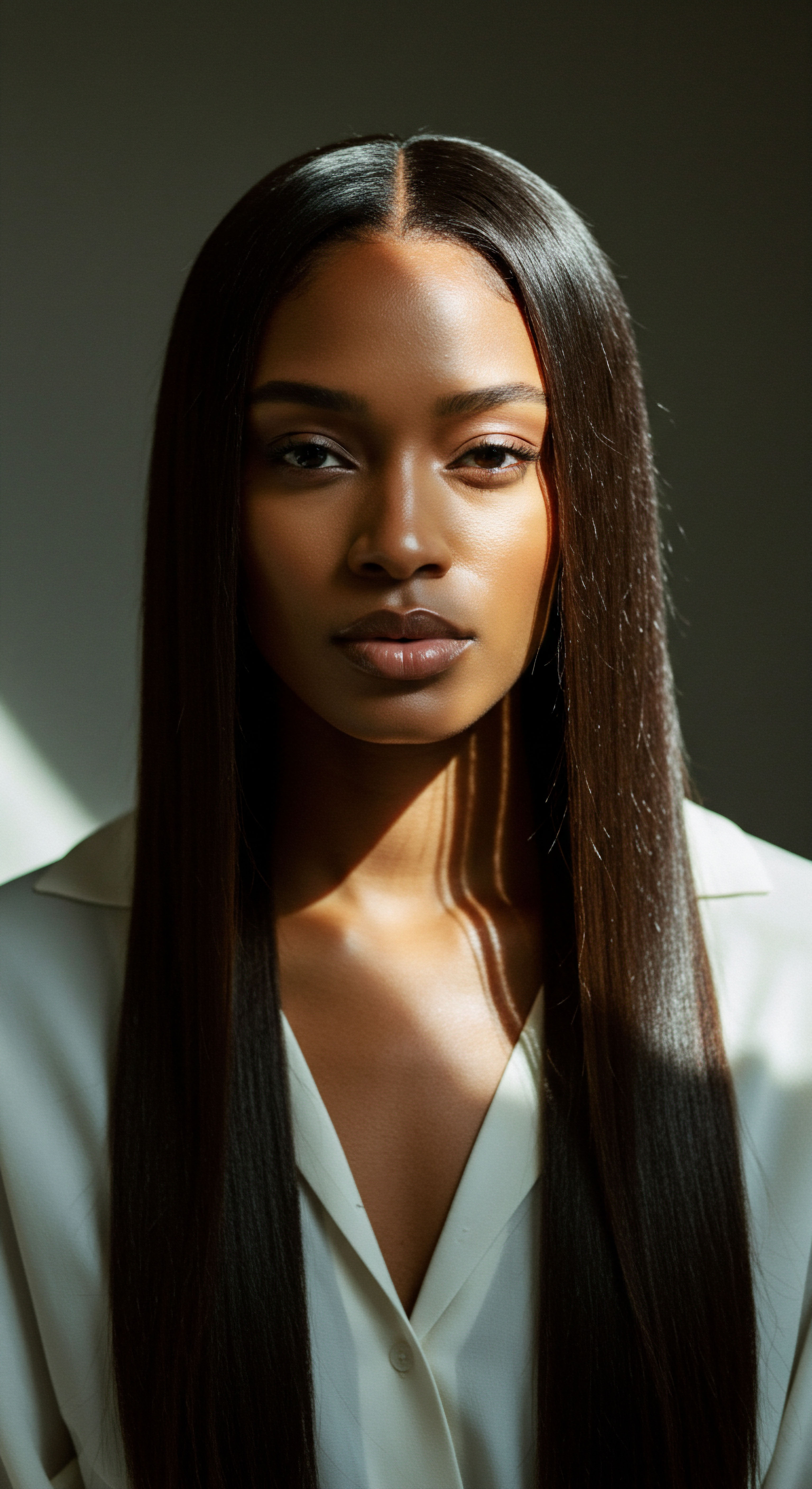
Reflection
As we conclude our exploration into the ideal fabric for protecting textured hair at night, we arrive at a quiet understanding ❉ the choice of what our hair rests upon is more than a mere detail. It is a daily reaffirmation of care, a whisper of historical wisdom, and a nod to the intricate science that governs our strands. From the microscopic architecture of a single coil to the expansive tapestry of cultural practices, the nightly ritual of protection speaks to a deeper connection with our hair’s inherent beauty and resilience. It is a gentle, yet profound, act of preserving its vitality, allowing it to unfurl its full potential with each new day.

References
- Adeyemi, A. O. (2021). Effective Afro Hair Care Routines. Pan-African.
- Bhushan, B. (2005). Biophysics of Human Hair. Biological and Medical Physics.
- Bhushan, B. Wei, G. & Haddad, P. (2005). Friction and Wear Studies of Human Hair and Skin. Wear, 258(9), 1012-1021.
- Chalmers, O. (2024). All-day hair manageability for textured hair types ❉ A revision of the current anti-frizz technologies and suggestions for the future. Chalmers ODR.
- Konno, S. Asanuma, K. & Nonomura, Y. (2024). Friction Dynamics of Straight, Curly, and Wavy Hair. Journal of Oleo Science, 73(5), 801-811.
- Lab Muffin Beauty Science. (2020). Silk for Skincare and Haircare.
- Lee, D. & Gabarra, M. (2023). The Fabric Factor ❉ The Role of Your Pillowcase and Hair Accessories in Hair Care. TRI Princeton.
- Lenzy, Y. & Alexis, A. F. (2015). Contemporary African-American Hair Care Practices. Journal of Clinical and Aesthetic Dermatology, 8(5), 36–42.
- MDPI. (2024). Porosity and Resistance of Textured Hair ❉ Assessing Chemical and Physical Damage Under Consumer-Relevant Conditions.
- Mimi et Mina. (2023). The Benefits of Silk and Satin for your hair ❉ Hair Wraps and Pillowcases.
- Oguejiofor, E. et al. (2025). Historical Perspectives on Hair Care and Common Styling Practices in Black Women. Clinics in Dermatology.
- Umthi. (2023). The Cultural Significance and Representation of Afro-Textured Hair.